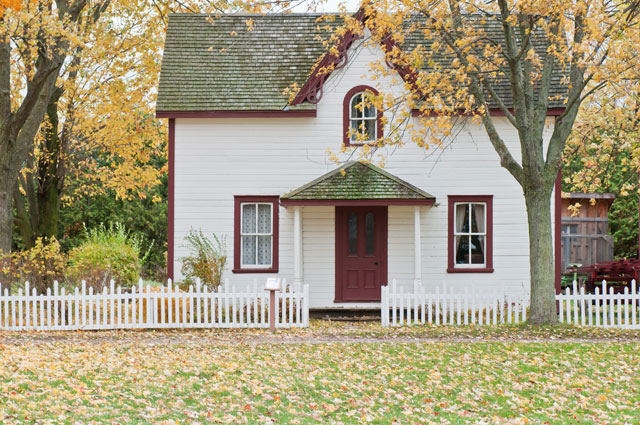A guide to buying your first home

Buying your first home can generate mixed emotions. It provides a sense of financial security as a ‘roof over your head' and it can allow you the freedom to make additions and changes, such as nailing pictures on the wall without seeking approval from a landlord. But it can be equally daunting. Mortgage repayments suddenly reduce your disposable income and unexpected expenses can arise such as costs to fix a burst water pipe that your landlord was once responsible for paying for.
All in all, it can be a great experience if you do your homework and seek advice from professionals to help you make the right decisions. UC alumna and financial expert, Gianna Thomson, aids clients to achieve their goal of purchasing their first home by helping them to identify their financial goals and devising a financial strategy to turn their property goals into reality.
She shares with us her tips to help your first home experience be a positive one.
1. Have a plan
Set yourself up for success with a financial plan which involves an automated cash flow and bank account structure, savings plan, pay off ‘bad’ debts and put in place a Plan B such as personal insurances. Also, think with the end in mind. What is the purpose of this property? If you’re buying this home to one day turn in to an investment property, have a think about what renters will seek for. For example, an apartment close to the city may not be your ideal long-term suburban family home, but it may be easier to rent out in the future when it's an investment property.
2. Superannuation Saver
The First Home Super Saver scheme was recently legislated to help first home buyers save for a house deposit via their superannuation fund, providing an opportunity to accelerate deposit savings with tax savings and investment returns. This scheme allows first home buyers to make voluntary contributions (which excludes the 9.5% superannuation guarantee from your employer) into their superannuation fund, such as salary sacrifice, personal tax-deductible contributions, and post-tax contributions. These voluntary contributions can then be withdrawn from the superannuation fund after 1 July 2018 to be used as a deposit. There are limits to how much you can contribute per financial year, and the maximum amount that can be withdrawn from the super fund is $30,000 of contributions plus earnings, per person (that is, $60,000 for a couple).
Be mindful that this strategy isn't risk-free as a downturn in investment returns might impact your deposit. However good returns could boost your house deposit savings too. A financial adviser can advise on the investment option to elect, and which voluntary superannuation contributions are appropriate for you as this is often based on your taxable income.

3. Stick to your Budget
Buy what you can afford. Use the Money Smart mortgage calculator and chat with a mortgage broker (that is, someone who can consider a variety of loan providers for you) to estimate how much you can afford, including a ‘what if scenario’ if interest rates rose by 2%. Simon Porter who is an experienced realtor and property investor at Luton in Canberra says "make sure you buy only what you can afford. This may mean you may not be able to buy your dream home straight up. Consider your first home as a stepping stone to your dream home as you build your property portfolio or renovate the home over time”.
Also, to achieve financial freedom you need to have a portfolio of assets that general ‘passive income' such as rental income from an investment property so consideration needs to be made as to how your primary residence fits into your overall ‘financial freedom' plan.
4. Lenders Mortgage Insurance
If you have less than a 20% deposit, be prepared to pay Lenders Mortgage Insurance which is an insurance premium you pay to cover the bank in the event you go can’t repay your loan. Simon Porter suggests that paying LMI to enter the property sooner, particularly in a rising market could be worthwhile. Alternatively, you may determine that saving for a few extra months for a larger deposit may be better. A guarantor can also help you avoid LMI whereby someone, such as a parent, is willing to put their own house on the line to guarantee to the banks they will still get their money back if you forfeit on your loan.
5. New vs Old
A key benefit of buying a place off the plan, or a substantially renovated property, includes the first home buyer grant which is currently $7,000 in the ACT. Also, buying off a plan can help you enter the property market sooner by exchanging with a low deposit (as low as 5%), and then allowing you time to save for the rest of your deposit whilst the property is being built. If the value of the place goes up, you will benefit from the increased property value when you apply for a loan. However, if the value of the property goes down between Exchange and Settlement, you will still need to pay for the property at the value at Exchange.
Also, new houses and apartments are more expensive than older property (old versus new Kingston in Canberra is a prime example) and consider oversupply of new apartments or houses in the area too which may impact long term capital growth. You can research these statistics by looking at data on property websites such as All Homes and speaking to reputable real estate experts in the area.
 | Gianna ThomsonBachelor of Finance, University of Canberra (2013)Gianna Thomson is a certified financial planner and a Commonwealth superannuation expert, who runs her own financial planning business. You can connect with Gianna through her email - giannathomson@outlook.com.au |

